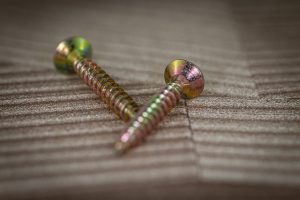
Have you ever tried to remove a screw, only to discover that it’s stripped? You aren’t alone. Stripped screws are a common occurrence. Stripping is characterized by damage to a screw’s head recess. When the head recess becomes worn or otherwise damaged, it may no longer support a screwdriver bit. You might be able to place a screwdriver bit inside of the damaged recess, but you won’t be able to remove the screw by turning it. Fortunately, you can keep screws from stripping in several ways.
Choose the Right Type of Screws
Some types of screws are more likely to strip than others. You should specifically consider the head recess when choosing screws. The fewer points of contact a head recess has, the more likely it is to strip. Screws with a Philips head recess have four points of contact, whereas screws with a flat or slotted head recess have fewer points of contact. Therefore, the former type is better protected from stripping than the latter type.
Avoid Using an Oversized or Undersized Screwdriver Bit
Don’t make the mistake of using an oversized or undersized screwdriver bit. The screwdriver bit needs to be the right size. In other words, it should fit firmly into the screw’s head recess. If it’s too small, the screwdriver bit will move around, which can damage the inner walls of the screw’s head recess. If it’s too big, the screwdriver bit may only sit partially inside of the head recess, which can also cause damage to it. The bottom line is that you need to use a screwdriver bit in the right size. Otherwise, you may inadvertently strip the screw when installing or removing it.
Align Screwdriver Perpendicular to the Screw
Another tip to prevent stripping is to align your screwdriver so that it’s perpendicular to the screw. You should place your screwdriver directly over the screw before inserting the bit and turning it. If your screwdriver is angled — even if it’s just a slight angle — you may damage the screw’s head recess. Ensuring that your screwdriver is perpendicularly aligned to the screw will minimize the risk of stripping.
Use the Least Amount of Power Necessary
You can keep screws from stripping by using the least amount of power necessary to install or remove them. If you’re driving a screw into a surface with a powered screwdriver, for instance, set your screwdriver to the lowest speed setting. You can then gradually raise the speed setting until it’s able to push the screw into the object. Setting your powered screwdriver to the fastest speed setting will only expose the screw to unnecessary wear and tear.
